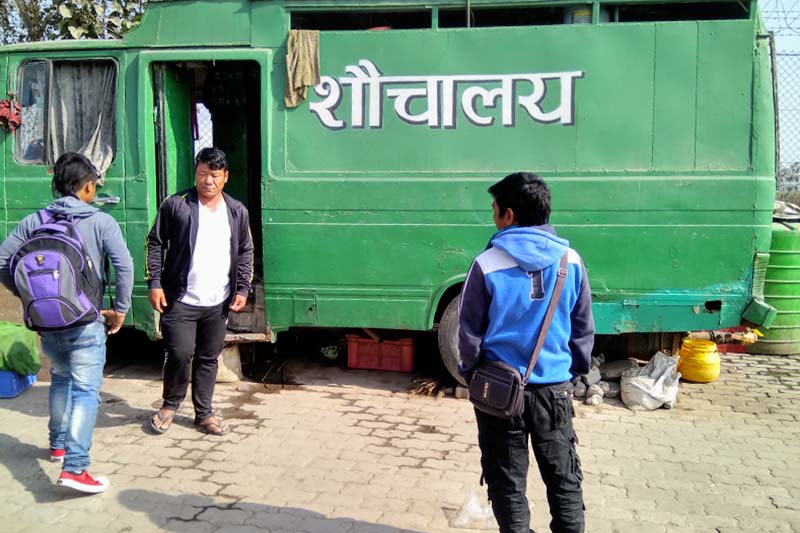Mobile toilets becoming popular in Valley
Kathmandu, December 3
Mobile toilets are becoming increasingly popular in Kathmandu Valley. Kathmandu Solid Waste Management Service had launched mobile public toilets in Kathmandu for the first time in 2009.
According to Basudev Upreti, executive director of KSWMS, mobile toilets have been set up at Sahidgate, Old Buspark, Bir Hospital and Basantapur currently, while one mobile toilet keeps making round of the city. He said each of these mobile toilets earned Rs 25,000 profit a month.
“We are flooded with requests to set up mobile toilets in areas with high public mobility,” he told The Himalayan Times. He said KSWMS was preparing to add five more mobile toilets in the Valley very soon.
According to Kathmandu Metropolitan City, it is preparing to set up public toilets in 48 different places in the Valley.
A mobile toilet has different tanks to collect urine and stool separately. Each tank has a capacity of 500 litres.
Kathmandu Metropolitan City’s Environment Management Department had inked a deal with Upreti on April 2008 to operate mobile toilet for five years.
As per the agreement, the toilet proprietor is required to set up mobile toilet in 10 different locations.
A study on public latrines in Kathmandu Valley in 2012 showed that people refrained from using public toilets due to poor hygiene and lack of cleanliness.
Although four years have passed since the study was conducted, the condition of public latrines still remains pathetically poor in the Valley.
There were a total of 68 public toilets in the Valley when the study was conducted.
The Kathmandu Metropolitan City has built additional 10 public latrines in the Valley since, but most people avoid using them.
According to the study, 19 per cent of people on the move did not want to use public toilets due to poor hygiene and lack of cleanliness. It was found that around 1,000 people used each public toilet a day.
The Department of Water Supply and Sewerage said 34 districts, 89 municipalities and more than 2,110 village development committees were declared open defecation free zone so far.






